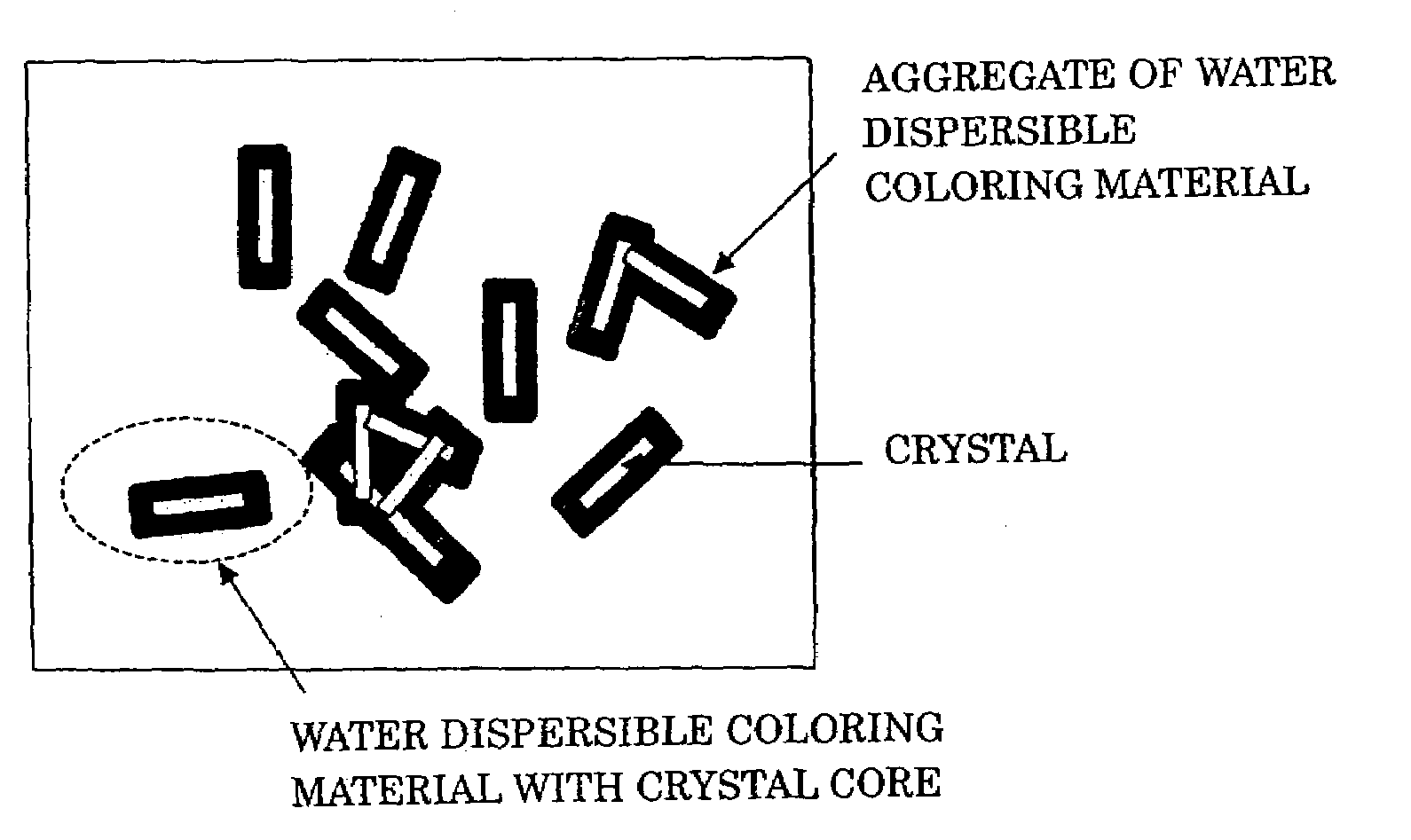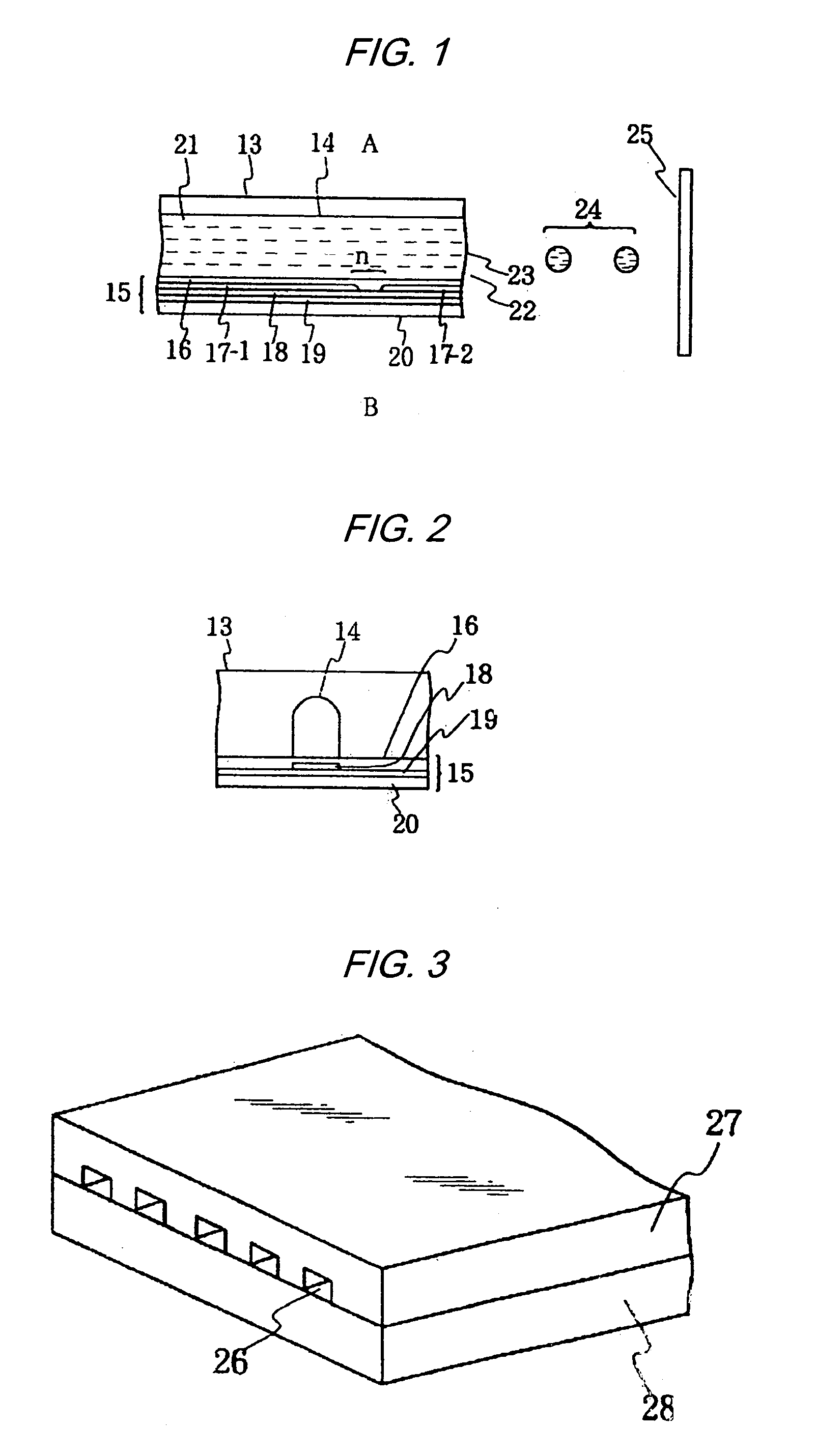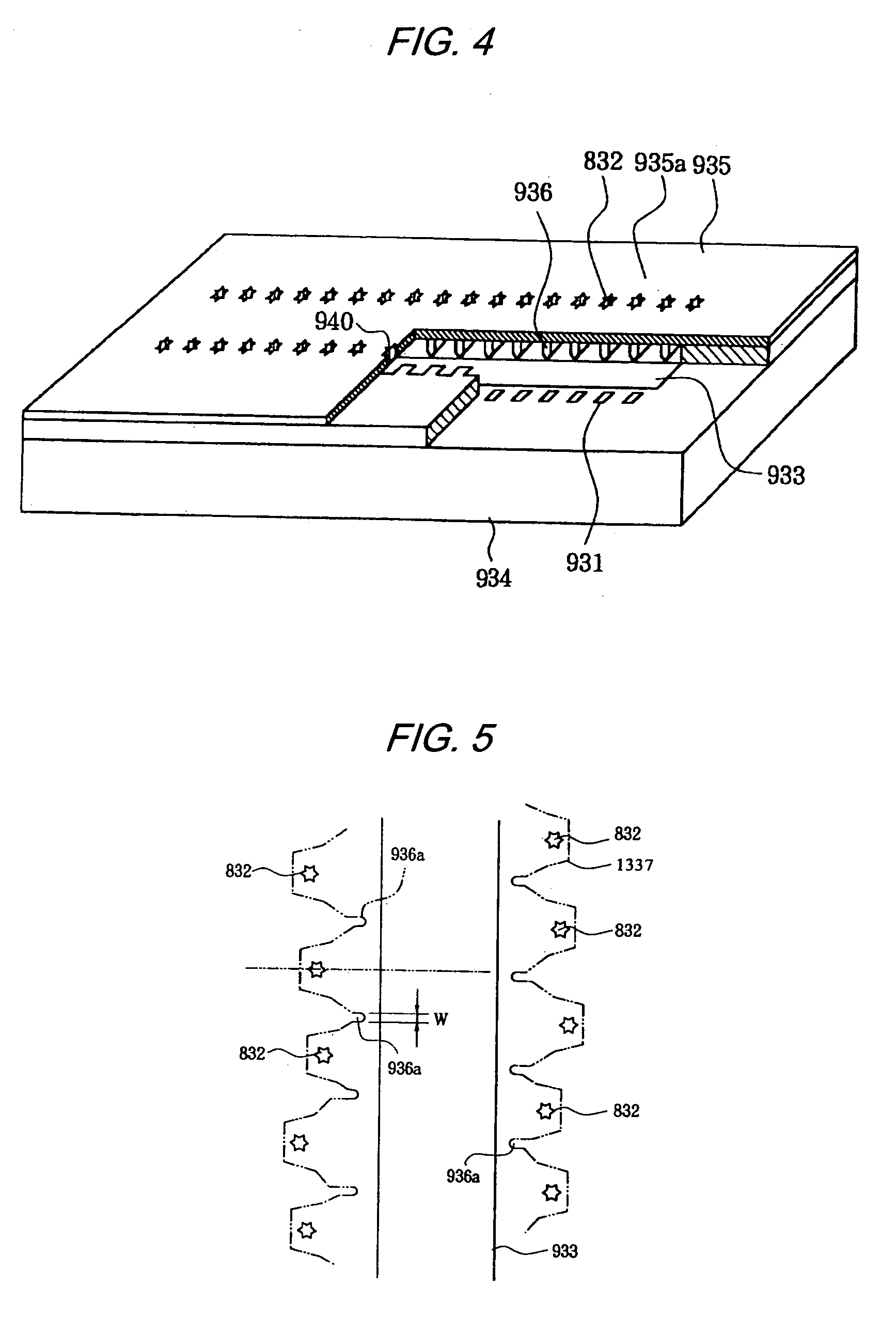Aqueous ink, image recorded using said aqueous ink and method for forming said image
a technology of aqueous ink and recording method, which is applied in the direction of inks, luminescent compositions, instruments, etc., can solve the problems of insufficient resistance to water and light fastness, inability to meet the requirements of such ink, and inability to achieve the effect of stable effect and improved image density
- Summary
- Abstract
- Description
- Claims
- Application Information
AI Technical Summary
Benefits of technology
Problems solved by technology
Method used
Image
Examples
examples
[0104]Hereinafter, the present invention will be described in more detail by showing examples and comparative examples. Unless indicated otherwise, a part(s) and a percent(s) in Examples are based on mass.
production example 2
[0106]100 g of the polymer solution used in Dispersion 1, 100 g of C.I. Pigment Red 122, and 300 g of ion-exchanged water were mixed, and the mixture was mechanically stirred for 0.5 hour. Then, by using a microfluidizer, the mixture was treated by passing through an interaction chamber five times under a fluid pressure of approximately 10,000 psi (approximately 70 MPa) to obtain a dispersion. Then the dispersion was subjected to a centrifugation treatment (at 12,000 rpm for 20 minutes) to remove non-dispersed materials including coarse particles, thereby obtaining Dispersion 1. The thus-obtained Dispersion 2 had a pigment concentration of 10% and a dispersing agent concentration of 5%.
production example 3
[0107]Initially, an AB type block polymer having an acid value of 300 and a number average molecular weight of 4,000 was produced by a conventional method using benzyl acrylate and methacrylic acid as raw materials. Subsequently, the obtained block polymer was neutralized with a potassium hydroxide aqueous solution and was diluted with ion-exchanged water to prepare a homogeneous 50% aqueous solution of the polymer. 110 g of the polymer solution, 100 g of C.I. Pigment Yellow 128, and 290 g of ion-exchanged water were mixed, and the mixture was mechanically stirred for 0.5 hour. Then, by using a microfluidizer, the mixture was treated by passing through an interaction chamber five times under a fluid pressure of approximately 10,000 psi (approximately 70 MPa) to obtain a dispersion. Then the dispersion was subjected to a centrifugation treatment (at 12,000 rpm for 20 minutes) to remove coarse particles, thereby obtaining Dispersion 3. The thus-obtained Dispersion 3 had a pigment conc...
PUM
| Property | Measurement | Unit |
|---|---|---|
| specific surface area | aaaaa | aaaaa |
| particle diameter | aaaaa | aaaaa |
| volume average particle diameter | aaaaa | aaaaa |
Abstract
Description
Claims
Application Information
 Login to View More
Login to View More - R&D
- Intellectual Property
- Life Sciences
- Materials
- Tech Scout
- Unparalleled Data Quality
- Higher Quality Content
- 60% Fewer Hallucinations
Browse by: Latest US Patents, China's latest patents, Technical Efficacy Thesaurus, Application Domain, Technology Topic, Popular Technical Reports.
© 2025 PatSnap. All rights reserved.Legal|Privacy policy|Modern Slavery Act Transparency Statement|Sitemap|About US| Contact US: help@patsnap.com



